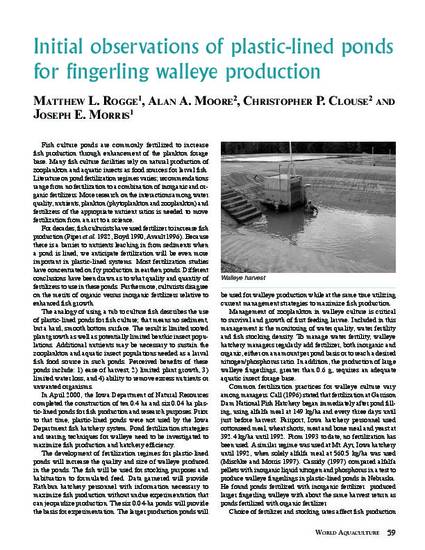
Article
Initial observations of plastic-lined ponds for fingerling walleye production
World Aquaculture
Document Type
Article
Publication Version
Published Version
Publication Date
12-1-2002
Abstract
Fish culture ponds are commonly fertilized to increase fish production through enhancement of the plankton forage base. Many fish culture facilities rely on natural production of zooplankton and aquatic insects as food sources for larval fish. Literature on pond fertilization regimes varies; recommendations range from no fertilization to a combination of inorganic and organic fertilizers. More research on the interactions among water quality, nutrients, plankton (phytoplankton and zooplankton) and fertilizers of the appropriate nutrient ratios is needed to move fertilization from an art to a science.
Copyright Owner
World Aquaculture Society
Copyright Date
2002
Language
en
File Format
application/pdf
Citation Information
Matthew L. Rogge, Alan A. Moore, Christopher P. Clouse and Joseph E. Morris. "Initial observations of plastic-lined ponds for fingerling walleye production" World Aquaculture Vol. 33 Iss. 4 (2002) p. 59 - 61 Available at: http://works.bepress.com/joseph-morris/17/

This article is published as Rogge, M. L., A. A. Moore, C. P. Clouse and J. E. Morris. 2002. Initial observations of plastic-line ponds for fingerling walleye production. World Aquaculture Magazine 33(4): 59-61. Posted with permission.